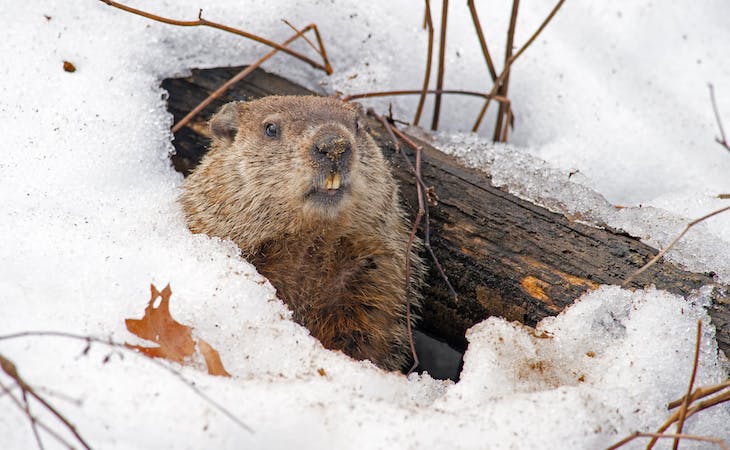With Groundhog Day coming up on February 2, we thought it’d be fun to share a few fascinating sleep facts about this North American rodent. Who knows? You might just be able to incorporate some of their sleep habits into your own routine!
Groundhogs prep their “homes” for hibernation
Much like how humans switch the summer decor to winter decor in their bedrooms for that “cozy” vibe, groundhogs prep their homes for the change in season too. Typically, they burrow in grassy areas during the spring and summer, while they dig a burrow in the woods for the winter months.
These burrows can be as large as 6 feet deep and 20 feet wide with various entrances, exits, and chambers. Groundhogs are pretty tidy when it comes to their homes, switching out the nesting throughout the months. When the time comes for their long naps, they create the ultimate comfy nest made of grass and twigs to rest on.
Groundhogs eat a lot before hibernating
While we recommend you refrain from eating right before bed for a sound night’s sleep, for groundhogs, it’s a must to consume a large amount of food right before hibernation.
Groundhogs are herbivores, so their diets include fruits and vegetables, plants, tree bark, and grasses. They can consume about a pound of food per sitting, and they spend the sunnier seasons stuffing themselves to build up and store fat as they don’t eat during hibernation.
This fat layer is what their bodies feed on throughout the cold winter months while they’re asleep, helping them survive the lengthy snooze.
Groundhogs switch into rest mode…literally
As winter approaches, the days get shorter and the temperature starts dropping. These changes prompt a groundhog’s body to release a hormone that helps guide the rodent into hibernation. During hibernation, many things occur within their furry bodies, including:
- A slowed heart rate, decreasing from between 80 and 100 beats per minute to around four or five beats per minute.
- A lower body temperature, falling from 98 degrees Fahrenheit to as low as 38 degrees.
- A reduced breathing rate and less oxygen intake.
For these reasons, groundhogs are considered “true hibernators,” making it almost impossible to wake these little guys up!
Groundhogs wake up for love
Turns out humans aren’t the only ones who consider February the month of romance and love. Male groundhogs hibernate for about three months, while the females stay asleep for a few weeks longer. The males wake up around early February to prepare for mating season.
They scope out and make “house calls” to female burrows near theirs. Once they know where their potential mates are, the male groundhogs return to their burrows to sleep for another month until early March. Once March approaches, they must wake at just the right time to breed and for their offspring to have the best chance at survival.
The bottom line: Groundhogs take getting deep sleep to a whole other level. Their existence—including their mating season—practically revolves around prepping for winter and hibernation. Talk about having the ultimate sleep routine!
Curious to learn more about how animals sleep? Check out our guide to the animals that sleep the most and least.




